Guest Post by Suzy Cincone
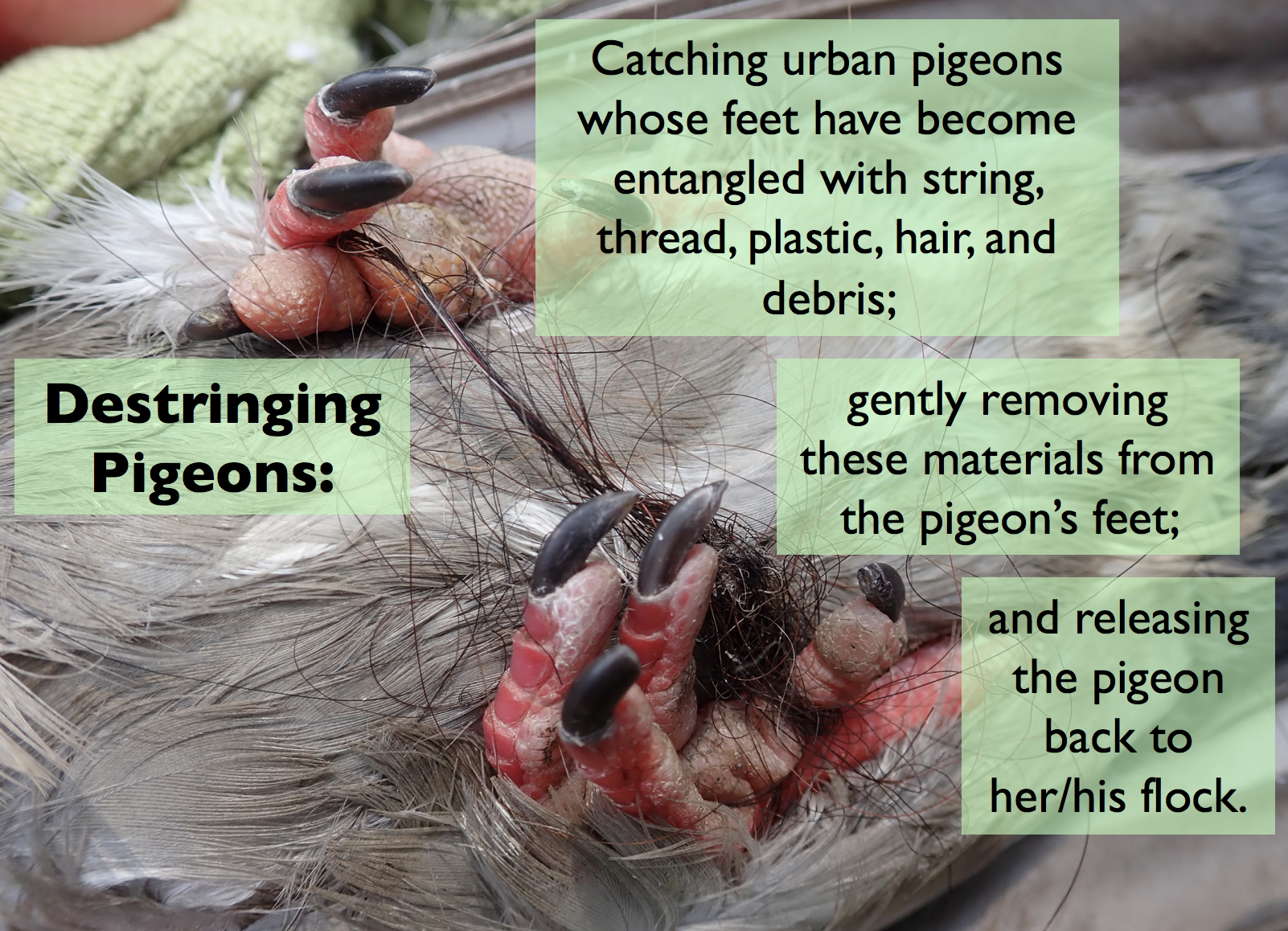
Anyone who has lived in an urban environment has seen stringfoot pigeons; many wonder how the feet of these birds come to be bound and twisted, but few people seem to realize that something can be done to alleviate the suffering of these beautiful birds. Although I am a recent arrival to the world of destringing pigeons, this practice is certainly not a new phenomenon. The most perfunctory online search reveals a variety of stories from at least the last few decades of individuals who undertake pigeon destringing, and there are undoubtedly countless other individuals whose destringing activities have gone completely unnoticed and unheralded.
Not long ago I came across the intriguing case of British author and critic Naomi Lewis, noted for her animal advocacy and her pigeon rescue efforts. It isn’t clear precisely when her pigeon destringing efforts started. She moved with her family to London’s Red Lion Square in 1935 and lived there until her death in 2009; her apartment became a haven for injured creatures and famously off limits to visitors, although “she was once observed releasing a convalescent pigeon from one of the windows.”[i]An article from the London Times in 1995 commented on the plight of stringfoot pigeons in the city, and on Lewis’ activities — when the article was written, Lewis was already in her 80s: “The writer Naomi Lewis goes round London with a small pair of scissors especially to help them. She has become expert at spotting pigeons in this plight, pouncing on them, picking them up, and cutting them free.”[ii]More recently, an author once acquainted with Lewis noted her passion for rescuing stringfoot pigeons: “Luckily for them, she knew where they were. During her hours of cycling around and wandering the streets, distributing bird seed, she had learned where the crippled ones lived. Imagine her patience – the endless searching, trudging, scattering, waiting, day after day, until she eventually caught them.”[iii]The image of Lewis, an elderly, “diminutive, velvet-clad woman,”[iv]bicycling and trudging about London in search of stringfoot pigeons is compelling and inspiring. Perhaps part of what draws me to the story of Lewis is that articles that mention her (including her obituaries) suggest, in the nicest way possible, that she was quite an eccentric, and her attraction to urban pigeons seems to be one of the factors that contributed to this assessment of her character. We who love pigeons are keenly aware that this love is often equated with eccentricity.
Judging by the reactions I have seen among people on the street who witness the process of pigeon destringing, it is an activity generally perceived as eccentric, and at first the reasons it is needed and done are difficult for observers to grasp. But once these somewhat confused and often skeptical bystanders understand what is going on and why, they are just as often supportive of efforts on behalf of pigeons and some are even anxious to participate. The evidence before their eyes helps to convince observers of both the beauty of these birds and our responsibility to help them. The destringing of urban pigeons can be seen as much more, therefore, than simply an effort to assist wild creatures to have lives free of suffering. It is one more way that we pigeon champions can help to normalize the public perception of all pigeons as valued and valuable creatures.
The Destringing Process in Action
What is the experience of destringing a pigeon like, and how is it done? There are many others who have been destringing for years, have handled countless stringfoot pigeons, and are so much more well-qualified than I to discuss this experience. With apologies, therefore, for my inexperience, I’d like to recount one of my own destringing experiences in San Francisco as a way of introducing the destringing process in general.
- Finding a stringfoot pigeon
Last week, a Muni failure forced me off the train at Church and Duboce. I had my destringing kit with me; I was headed for the Embarcadero, where there is a large population of stringfoot pigeons. Walking towards Market Street, I passed the Safeway parking lot and caught a glimpse of a pigeon flock there, browsing, preening, and flirting. Just in case, I stopped to check on them — and immediately spotted a beautiful white and grey girl with string on her feet, her feet bound together, barely able to walk.
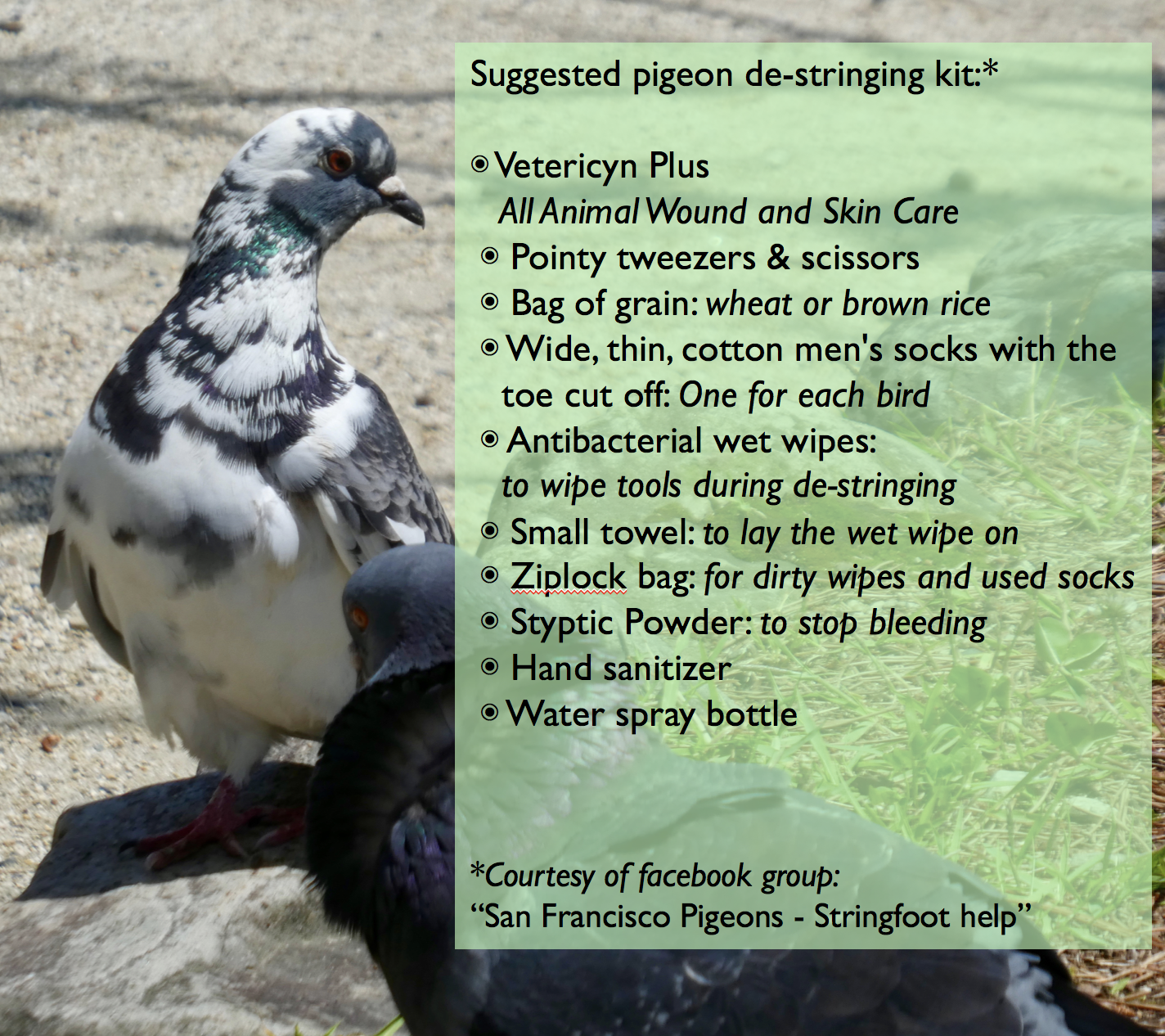
- Catching the stringfoot pigeon
A crucial aspect of the destringing process is, of course, catching the pigeon. This is an acquired skill (one I am still working on), that requires much practice and patience. For those living in cities that are fortunate enough to have Stringfoot Pigeon groups, one of the best ways to learn how to catch pigeons is one-on-one expert coaching.(For Jodie Foreman’s invaluable pigeon-catching tutorial, please see this video provided by the “San Francisco Pigeons – Stringfoot help” group:https://youtu.be/xgwO4EVKVxM.) Destringers seem to each develop their own approach to catching birds. For myself, I find that the position and disposition of the pigeon are the most important factors. I have the greatest likelihood of success if the pigeon is facing towards me (can’t easily fly away); is hemmed in by other birds; and has shifted its attention from me to the food I am dropping. After three tries and almost giving up all hope, I managed to catch this white and grey stringfoot girl.
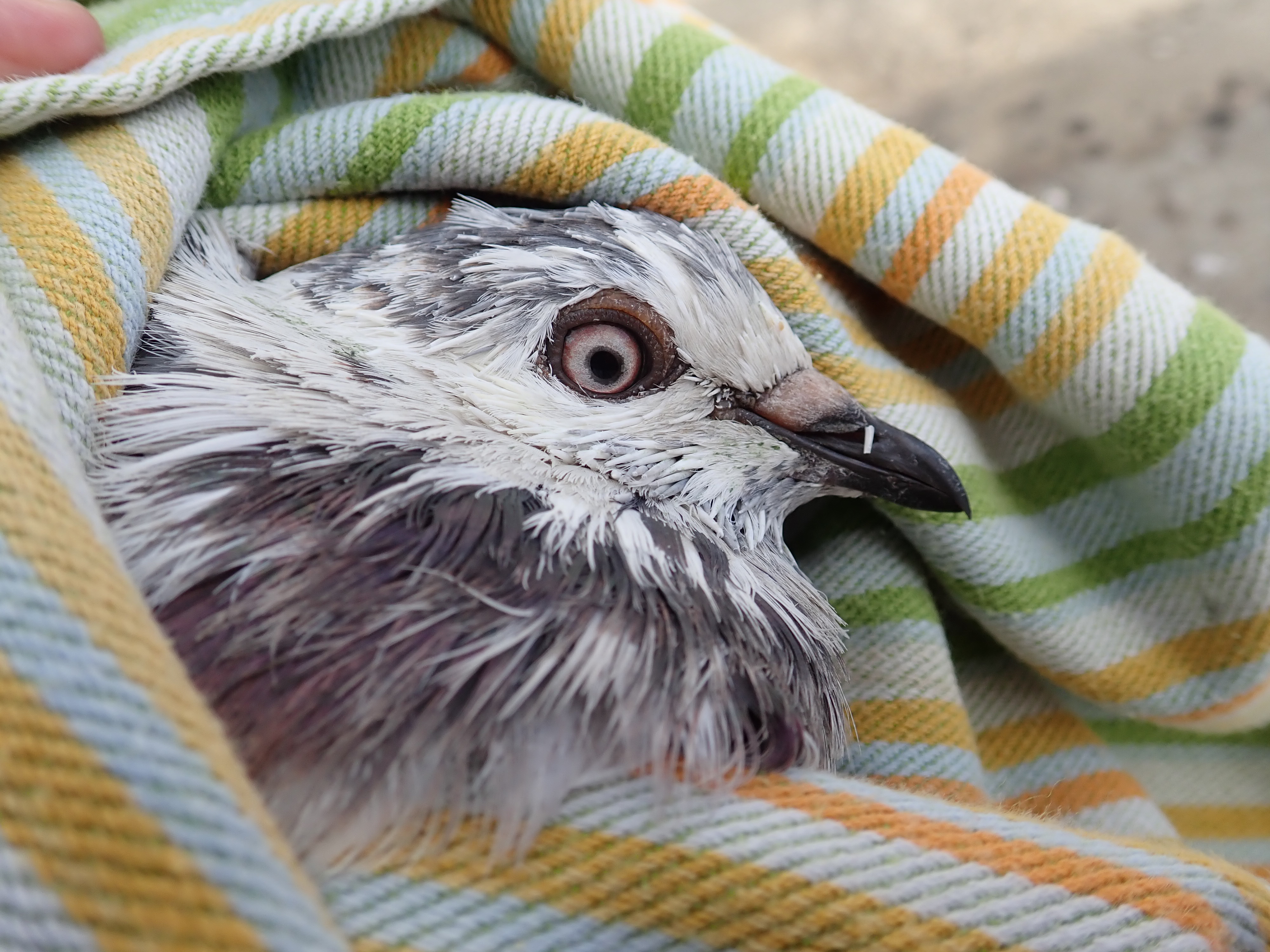
- Destringing
The actual destringing can range from a simple process, when the string or hair is easy to see, loosely wound, and easily removed, to a monumental challenge when the material is voluminous, woven in complex layers, deeply embedded in the foot, or has already caused a lot of tissue damage and deformity. Although each case is very different, at the most basic level the process involves spraying the foot with something like Vetricyn to clean, loosen, and soften the fibers, dirt, and any dead tissue; and then very gently loosening, cutting, and unwinding fibers from the foot. Unwinding when possible instead of simply cutting helps to ensure that no hair or thread remains embedded in the skin. (There is a very helpful tutorial illustrating the destringing process provided by the “San Francisco Pigeons – Stringfoot help” group: https://youtu.be/K9frBh9nrFk.) Fortunately for me and for this pretty pigeon, her string — which looked like a combination of twine and dental floss — was easy to see and remove, although cutting into her foot quite deeply.

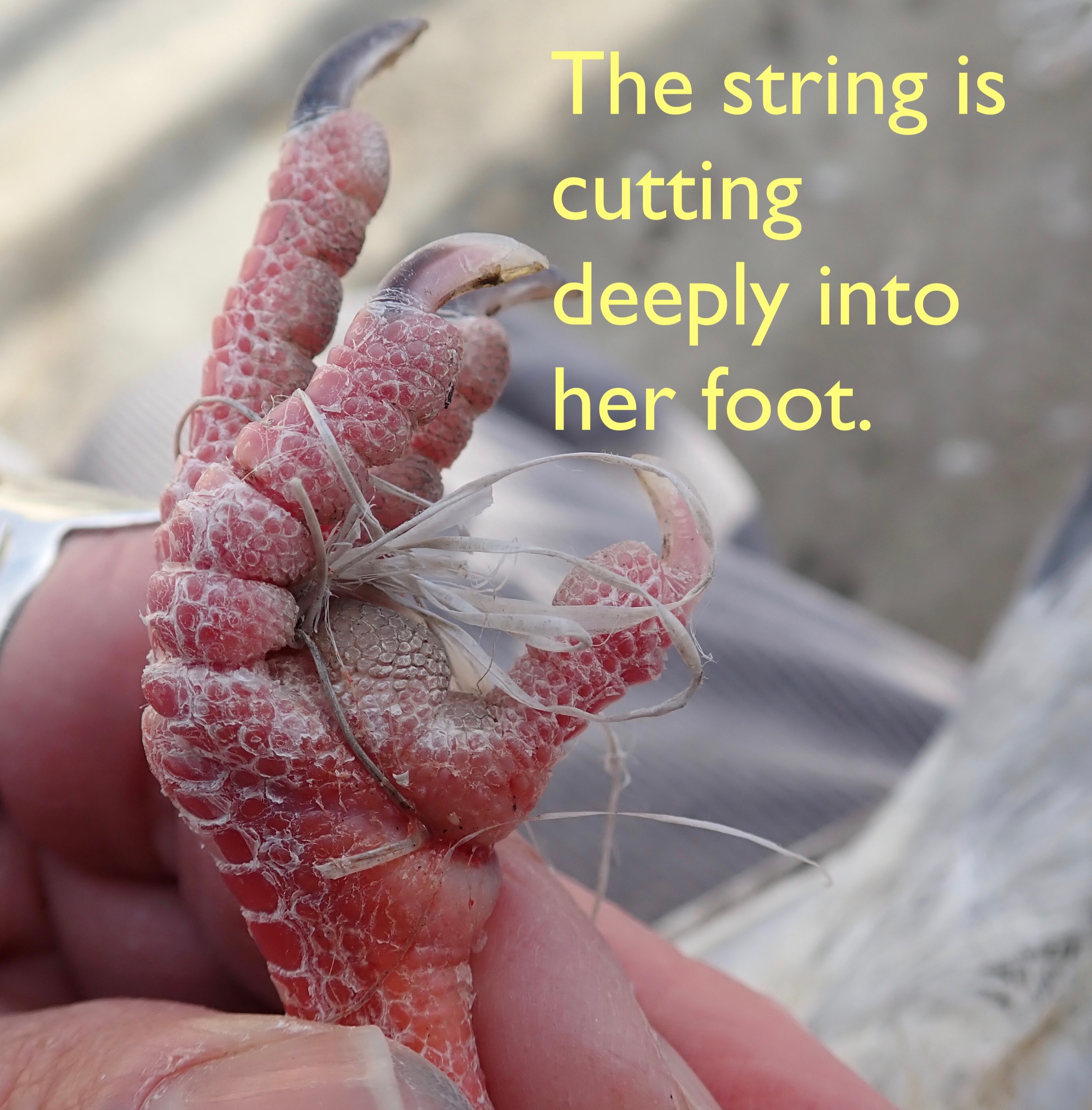
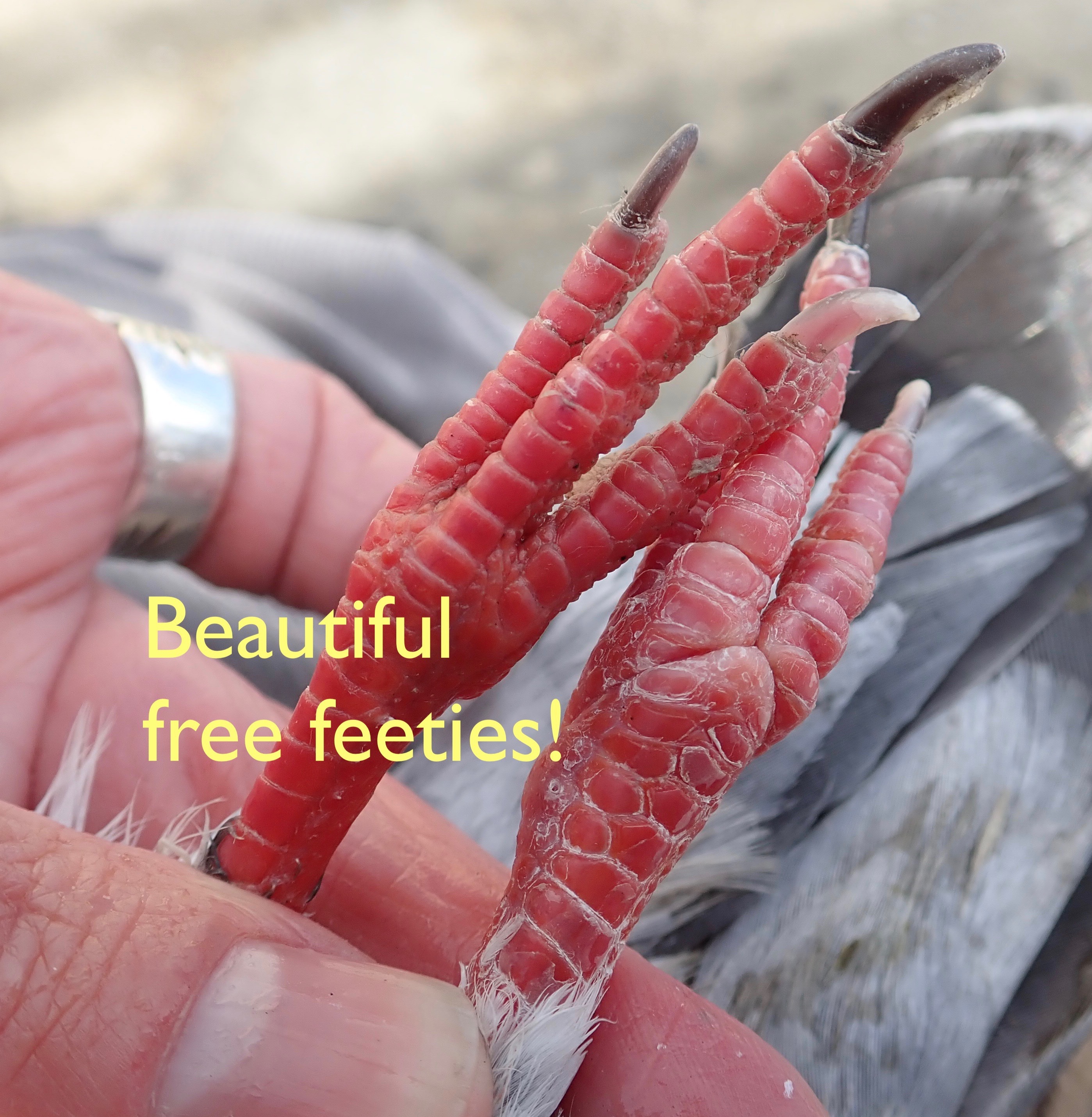
- Releasing the pigeon
Of course, once the pigeon’s feet are free and disinfected, the pigeon should be released back where caught and, if possible, in sight of her flock, who she will want to join quickly in order to recount her unpleasant adventure.
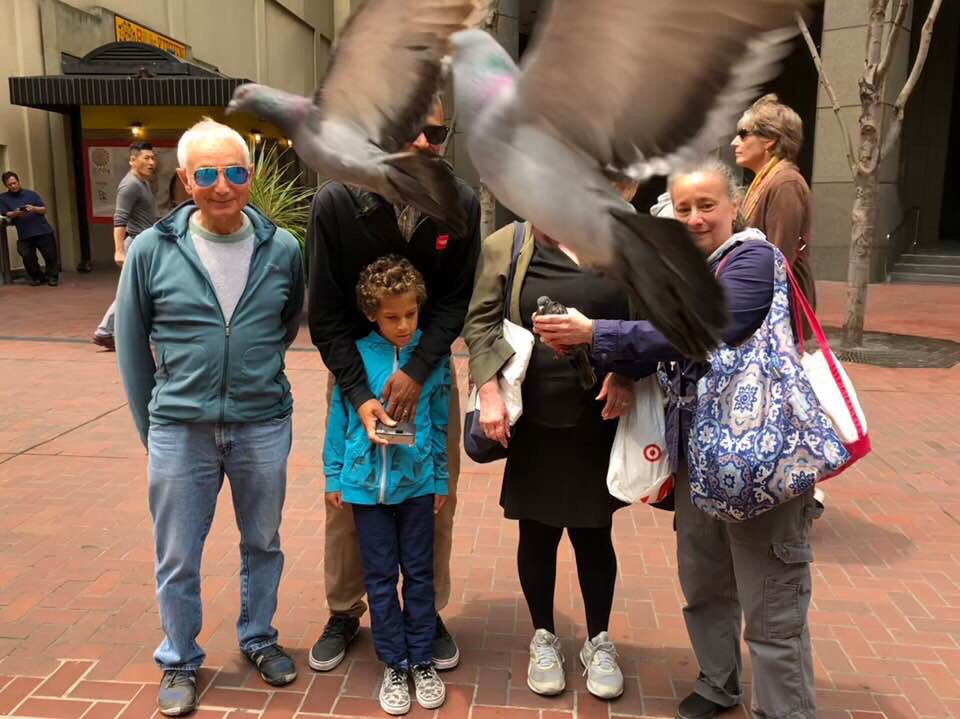
- Why we do it, when we shouldn’t, and how you can help
One of the factors that motivates me to destring stringfoot pigeons seems so self-evident that it almost goes without saying: these pigeons cannot remove string from their own feet. If you take a moment to really consider this simple fact, however, the enormity of it can be overwhelming. To realize this fact is to accept the knowledge that each and every stringfoot pigeon will live their entire lives in ever-increasing pain, acquiring infections, losing digits and feet, and becoming unable to perform the basic activities required to live, unless a human sees their need, picks them up, and frees their feet.
Alongside the recognition of this need, destringers also have to realize their own limitations. Even in the brief time I have been destringing, I have seen heartbreaking examples of pigeons with deformed and painful stringfeet who I simply could not catch. The numerous destringers who have more experience than I must have countless such stories. Jodie Foreman, who started the “San Francisco Pigeons – Stringfoot help” group and several groups in other US cities, told me that when she is out but does not have her destringing kit with her, she tries to resist looking at pigeons (I believe she now carries her kit at all times!). Although it is hard to resist, there is no advantage to catching a stringfoot pigeon if one is unprepared to destring, and destringers advocate against removing any pigeon from its flock, its mate, and possibly its babies.
There are many resources available for anyone interested in helping to free the feet of these beautiful birds. The facebook group “San Francisco Pigeons – Stringfoot help” (and groups in Denver, Chicago, Washington, Seattle, and Los Angeles) provides a wealth of information about finding, catching, destringing, and the complex issues that can arise in the destringing process. Experienced destringers on these forums give generously of their time to answer questions, give advice, and provide training.
There are few forms of wildlife rescue that demand as little from the rescuer as destringing stringfoot pigeons. If you are willing to do some research, buy a handful of supplies, and you have a bit of time, you can doubtless find stringfoot pigeons in need of help near you, regardless of where you are. And it is difficult to imagine another rescue activity that can provide the same level of instantly transformative relief from pain and disability, and lasting impact on quality of life, as freeing the feet of these gentle and beautiful creatures.
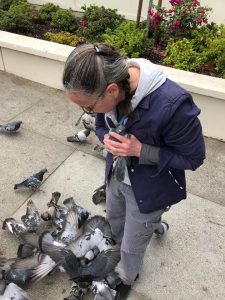
Suzy is a pigeon supporter and Palomacy volunteer who will soon be studying Veterinary Nursing in New Zealand in order to improve her skills rescuing birds of all types. She’s hoping to start a Stringfoot Pigeon Group in New Zealand.
[i]“Naomi Lewis,” The Telegraph, 3 August 2009.
[ii]Derwent May, “Feather Report: Trapped by Nature’s Fickle Hand,” The Times(London)
Section 4:1 (p.52).
[iii]Michele Hanson, “What the saviour of London’s pigeons taught me about the problem with plastic,” The Guardian 5 Feb 2018 (https://www.theguardian.com/environment/2018/feb/05/what-saviour-london-pigeons-taught-me-about-problem-with-plastic). Please note that although this article is extolling the dangers of plastic, cotton thread is actually as much of a threat to the welfare of pigeons as nylon thread.
[iv]“Naomi Lewis,” The Telegraph, 3 August 2009.
Editor’s addition
See also How Do Pigeons’ Feet Get Injured?

Destringers Faye, Liese, Gary & Mary
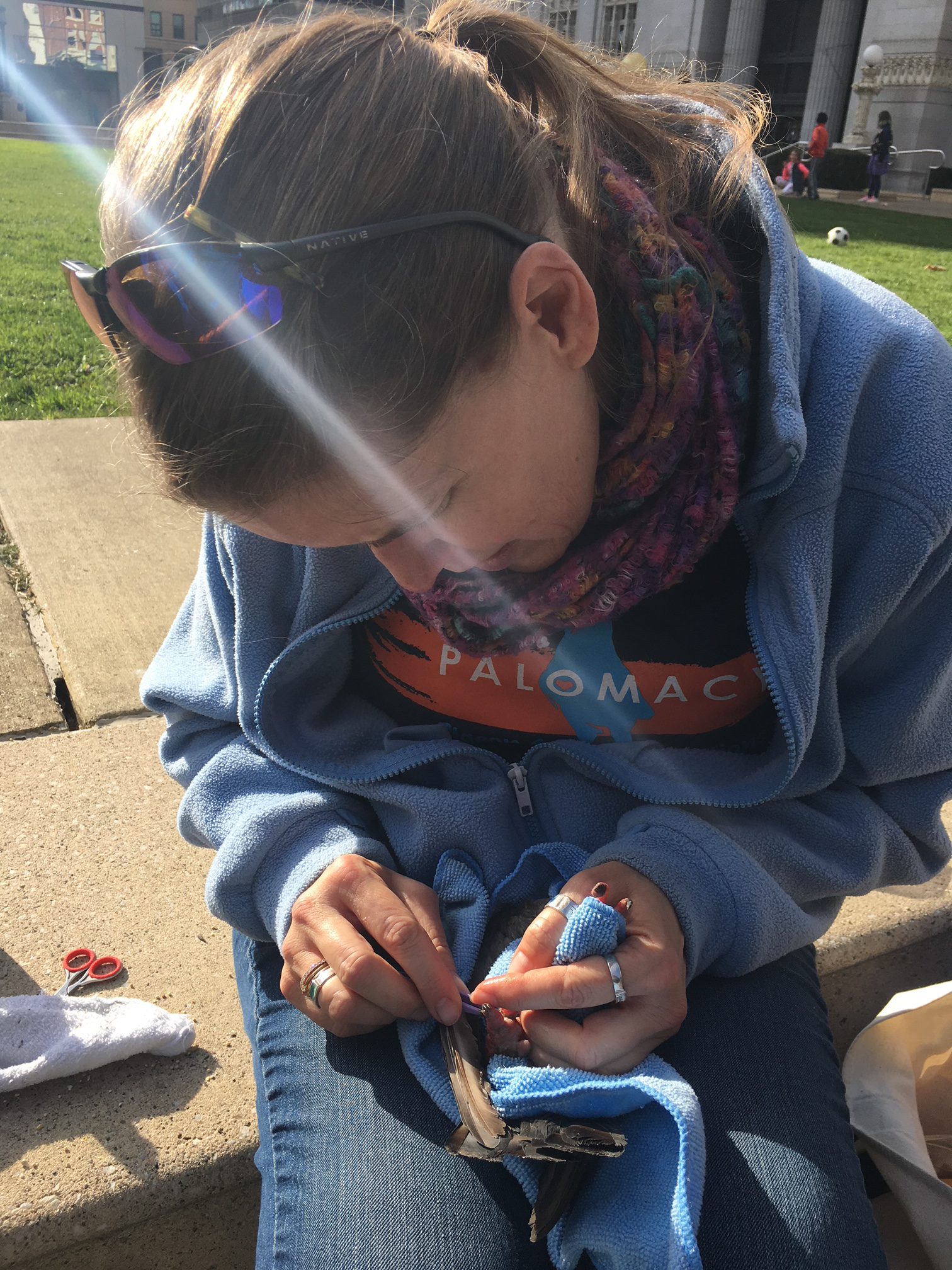
Destringing is on the spot rescue
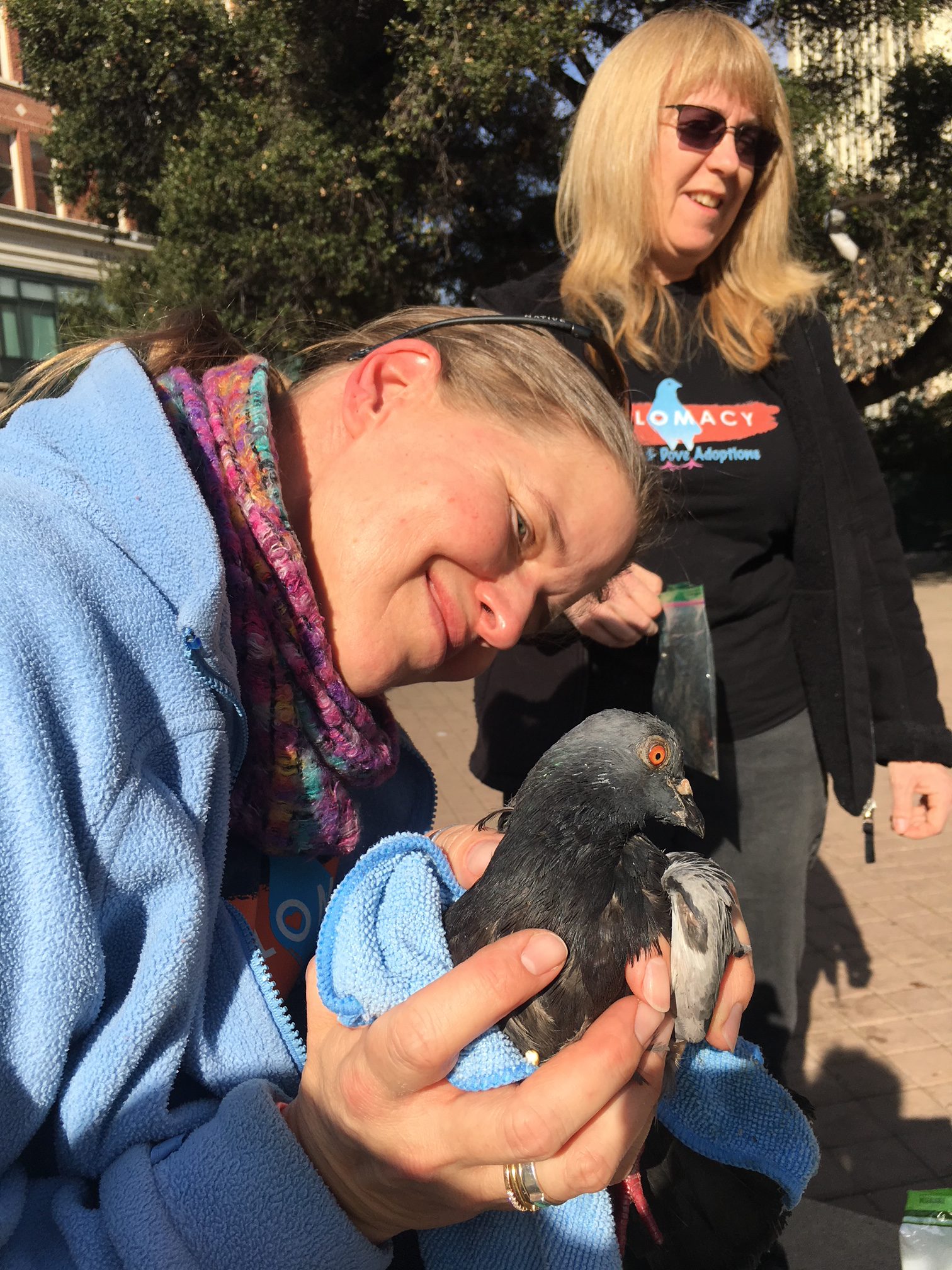
So much relief when the string is gone

